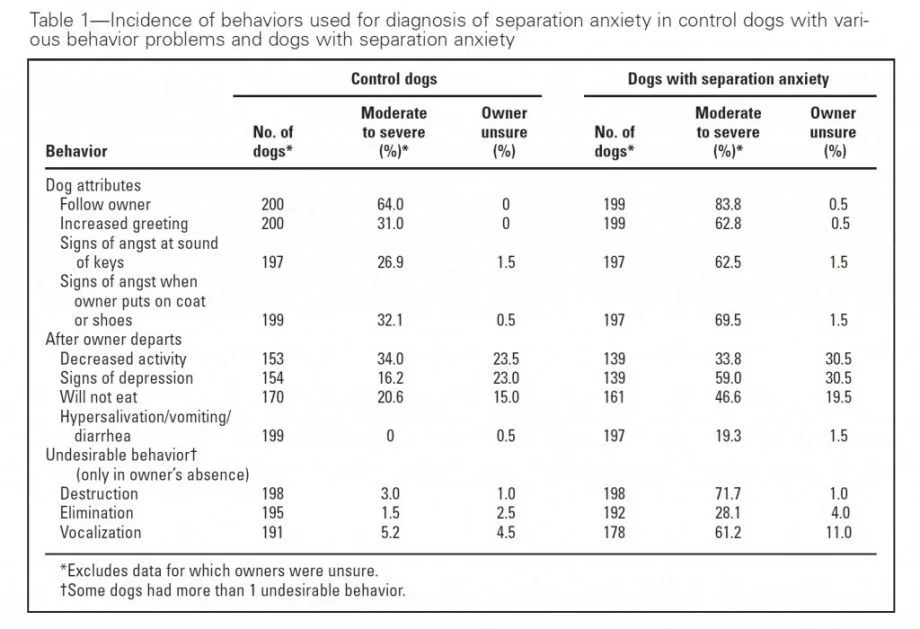Gerrard Flannigan and Nicholas H. Dodman, 2001
ABSTRACT
Objectives—To determine potential risk factors and behaviors associated with separation anxiety and develop a practical index to help in the diagnosis of separation anxiety in dogs. Design—Case-control study. Animals—200 dogs with separation anxiety and 200 control dogs with other behavior problems. Procedures—Medical records were reviewed for signalment, history of behavior problems, home environment, management, potentially associated behaviors, and concurrent problems. Results—Dogs from a home with a single adult human were approximately 2.5 times as likely to have separation anxiety as dogs from multiple owner homes, and sexually intact dogs were a third as likely to have separation anxiety as neutered dogs. Several factors associated with hyper-attachment to the owner were significantly associated with separation anxiety. Spoiling activities, sex of the dog, and the presence of other pets in the home were not associated with separation anxiety. Conclusions and Clinical Relevance—Results do not support the theory that early separation from the dam leads to future development of separation anxiety. Hyper-attachment to the owner was significantly associated with separation anxiety; extreme following of the owner, departure cue anxiety, and excessive greeting may help clinicians distinguish between canine separation anxiety and other separation-related problems.
Download full study below



Responses